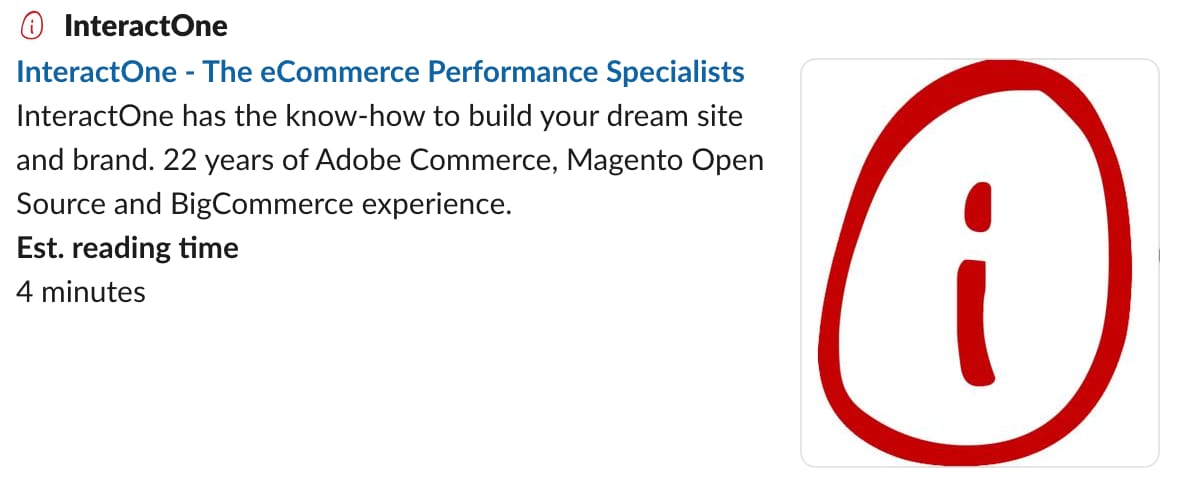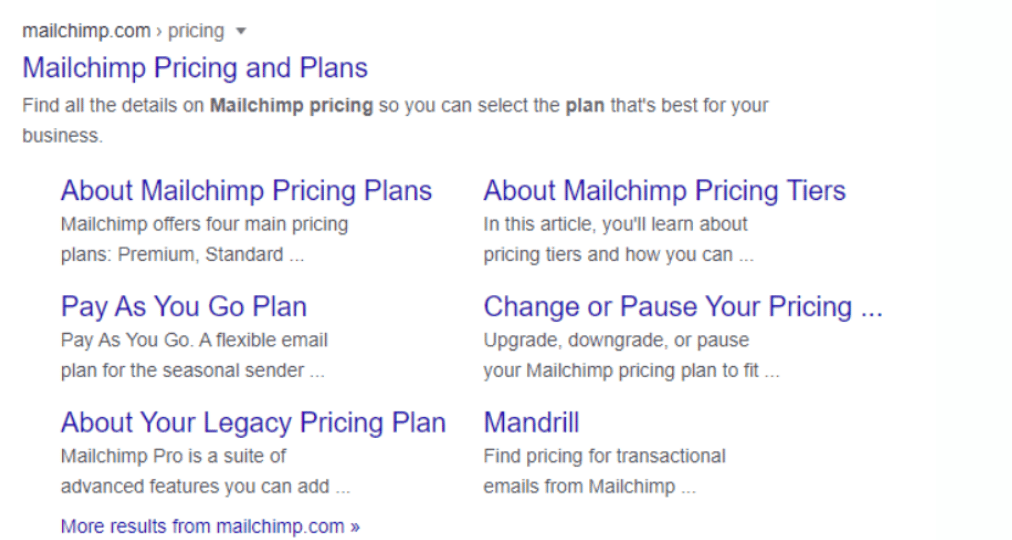
The list of elements on your webstore that ‘need work’ is seemingly endless. It’s easy for minor tasks to not receive priority when managing your firm’s growing eCommerce efforts. Meta descriptions are one of those small tasks that often get forgotten. Although Google has said meta tags are not a ranking factor, they are one of those small on-page SEO tasks you should incorporate into your content marketing strategy to optimize results.
In this blog, we will provide a quick guide about what meta descriptions are, why they are important. how to write them so they stand out in search engine result pages, and other tips to keep in mind when focusing on your site’s meta tags.
So, what is a meta description?
In short, a meta description is the short section of text that appears below a link in the Search Results page or in the preview section when you send a link. The purpose of a meta description is to describe what the page’s content is about, so people looking through a search results page know what to expect before they click. You can either write your own directly in your website’s CMS or search engines will pull content directly from your site to fill it in automatically. Do you want to leave this sort of customer-facing assignment up to a computer program? It is important to write your own – so you control what visitors see and can ensure the description is an accurate representation of what your site is about.

It is also important to note that meta descriptions are not a direct ranking factor. However, they can influence whether people will click on your webpage and indirectly influence your organic traffic.
Why are meta descriptions so important for your SEO?
Even though there is no direct correlation between meta descriptions and higher rankings on Google, meta descriptions do play a vital part in SEO. Google uses click-through rate (CTR) as a way of working out whether your link is a good result. What this means is the more people that click on your site, Google considers you to be a good result and will – based on your position – move you up the rankings. This is why optimizing your meta description is so important.
How to write a meta description effectively
Simply put, if you don’t put work into your meta descriptions, you may be missing out on quality website traffic, new leads, and customers. So, how can you start writing powerful meta descriptions that drive clicks? Follow the guidelines below:
Aim for the optimal length: The right length doesn’t exist because it depends on the message you want to convey to a specific audience. However, Google generally truncates your meta snippet to 120-160 characters. Therefore, it’s best to keep meta descriptions long enough that they’re sufficiently descriptive, but short and snappy at the same time. Keep in mind that the “optimal” length will vary depending on the situation, and your primary goal should be to provide value and drive clicks.
Use action-oriented copy: If you think about it, a meta description is just like call-to-action copy, it tells the audience exactly what visitors can do if they click. You should start your meta descriptions with action words like “Learn,” “Discover,” or “Grab” and then follow up with specific details about what your potential site visitor will get if they click.
Include keywords: If the search keyword matches a part of the text in the meta description, Google will be more inclined to use it and highlight it in the search results. This will make the link to your site even more inviting. Google sometimes even highlights synonyms. In the example below, both the Academy Awards and Oscars are highlighted. Getting your results emphasized like that makes them stand out even more.

Write compelling copy: Think of your meta description as advertising copy – if your snippet is boring what would motivate someone to click on your link? A page’s meta description should intelligently employ the page’s target keywords, in a natural, non-spammy way that compels the user to click through to the page. Google and other search engines often bold keywords from the user’s query in the description display, which draws the eye of the searcher. Try to match your descriptions to valuable search terms as closely as possible without over-optimizing them.
Avoid quotation marks: When double quotation marks (“…”) are used within meta description HTML markup, Google recognizes them as signals to truncate the description from that point and will automatically cut off the rest of the text from the Search Engine Results Pages (SERP) snippet. To prevent this from happening, your best bet is to remove all non-alphanumeric characters from any of your meta descriptions. On the other hand, if quotation marks are important in your meta description, you can use the HTML entity rather than double quotes to prevent truncation.
Don’t be misleading: If your meta description misleads your audience with content unrelated to what users should expect once they click they’re likely to leave quickly. That’s one sure way to get high bounce rates. Not only that, you might risk losing a viewer’s trust and/or mentally being blacklisted from them ever clicking on your site in the future. Be honest about who you are and what you do.
Below are a few good examples of meta descriptions that incorporate all of the above tips:
Hellofresh: They rank for the search query “recipe box subscription” and take a different strategy by using short, snappy sentences to make it enticing for a user to want to click to learn more.

Mailchimp: When you see this search result for their pricing page, you can see the total package they put together with the compelling meta description and rich snippets. The description is concise but says everything it needs to. Then the rest of the rich snippets show more information on the same topic.

Why are meta descriptions so important for your SEO?
Meta descriptions on their own might seem like a small thing and many businesses might overlook their importance, but they are your chance to create the first impression of your site to visitors. By using our best-practice guide on how to write a great meta description, you will not only improve click-through rates, but also decrease bounce rates to gain even more traffic in the future.
Spend time to fix your metadata today and begin seeing the results of that effort tomorrow. And if you need help with this or other Search Engine Optimization challenges, let us know, below. We’re digital marketing pros and are here to help.
Drop Us a Line At:
Or, if you prefer an old-fashioned phone call:
Phone (USA): (513) 469-3362
250 East Fifth Street 15th Floor PMB 664
Cincinnati, OH 45202

